MercoPress. South Atlantic News Agency
Antarctica
-
Thursday, January 5th 2012 - 05:36 UTC
Piñera reaffirms Antarctica policy and invites Mujica to visit Chilean bases

Chilean president Sebastián Piñera will be flying to Antarctic next 13 to 15 January together with his Uruguayan peer Jose Mujica, announced on Wednesday Chile’s Foreign Affairs minister Alfredo Moreno.
-
Wednesday, January 4th 2012 - 17:37 UTC
Pale octopus and yeti crabs found surrounding hydrothermal vents near Antarctica
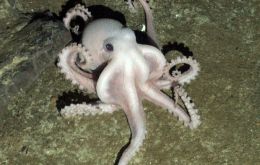
Communities of species previously unknown to science have been discovered on the seafloor near Antarctica, clustered in the hot, dark environment surrounding hydrothermal vents.
-
Wednesday, January 4th 2012 - 05:31 UTC
HMS Protector ‘complies with all requirements’ to operate from Montevideo
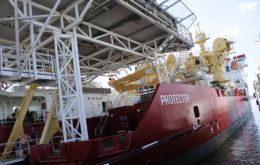
Uruguay authorized the Royal Navy Ice Patrol HMS Protector into Montevideo because it complies with normal procedure in spite of the fact that its next port of call is Stanley in Falklands/Malvinas.
-
Monday, January 2nd 2012 - 00:51 UTC
Scott’s spirit and contribution to science to be honoured by Antarctic expedition
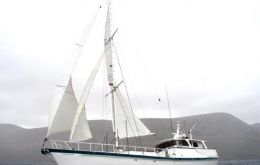
The New Year marks the 100th Anniversary of Captain Robert Scott’s Antarctic endeavors and his heroic efforts to reach the South Pole, which ultimately led to his team’s tragic demise in 1912.
-
Thursday, December 29th 2011 - 22:07 UTC
Scientists establish critical benchmark link for seabirds and available food
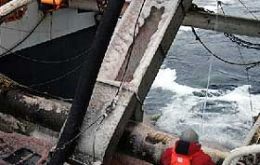
An international group of scientists has shown that many seabirds begin to suffer when the food available for them in the ocean declines below a critical level. This level is about one-third of the maximum measured amount of food available. They have found that this critical level is about the same for seabird species around the world. Their study — the most comprehensive ever undertaken — covers birds from the Arctic to the Antarctic and from the Pacific to the Atlantic.
-
Saturday, December 24th 2011 - 03:47 UTC
Merry Christmas from MercoPress

MercoPress wishes a happy holiday season to all its readers.
-
Tuesday, December 13th 2011 - 14:26 UTC
Norwegian expedition unable to re-edit Amundsen’s South Pole 1911 feat

The Norwegian expedition which was planning to celebrate the centenary of the South Pole discovery by Ronald Amundsen failed in their last leg of their mission with two of them abandoning and the other two not reaching on time for Wednesday’s party with Prime Minister Jens Stoltenberg.
-
Wednesday, December 7th 2011 - 18:57 UTC
UK plans a huge South Atlantic marine protection zone in South Georgia
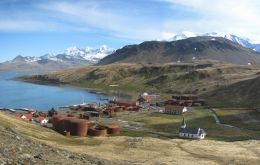
The UK is planning a huge marine protection zone near the Falkland Islands in the South Atlantic Ocean, in an area that is also claimed by Argentina, a British official said on Wednesday.
-
Monday, December 5th 2011 - 20:44 UTC
For old time's sake

THE third of a planned series of extended political articles written exclusively for the Penguin News web site by Deputy Editor John Fowler. John is a former Superintendent of Education and a former Manager of the Falkland Islands Tourist Board.
-
Wednesday, November 30th 2011 - 20:27 UTC
UK and Norway reaffirm commitment to polar and Southern Ocean cooperation

The Foreign Secretary, William Hague, and Norwegian Foreign Minister, Jonas Gahr Støre underlined on Wednesday their commitment to enhance UK/Norwegian cooperation in the Polar Regions.
